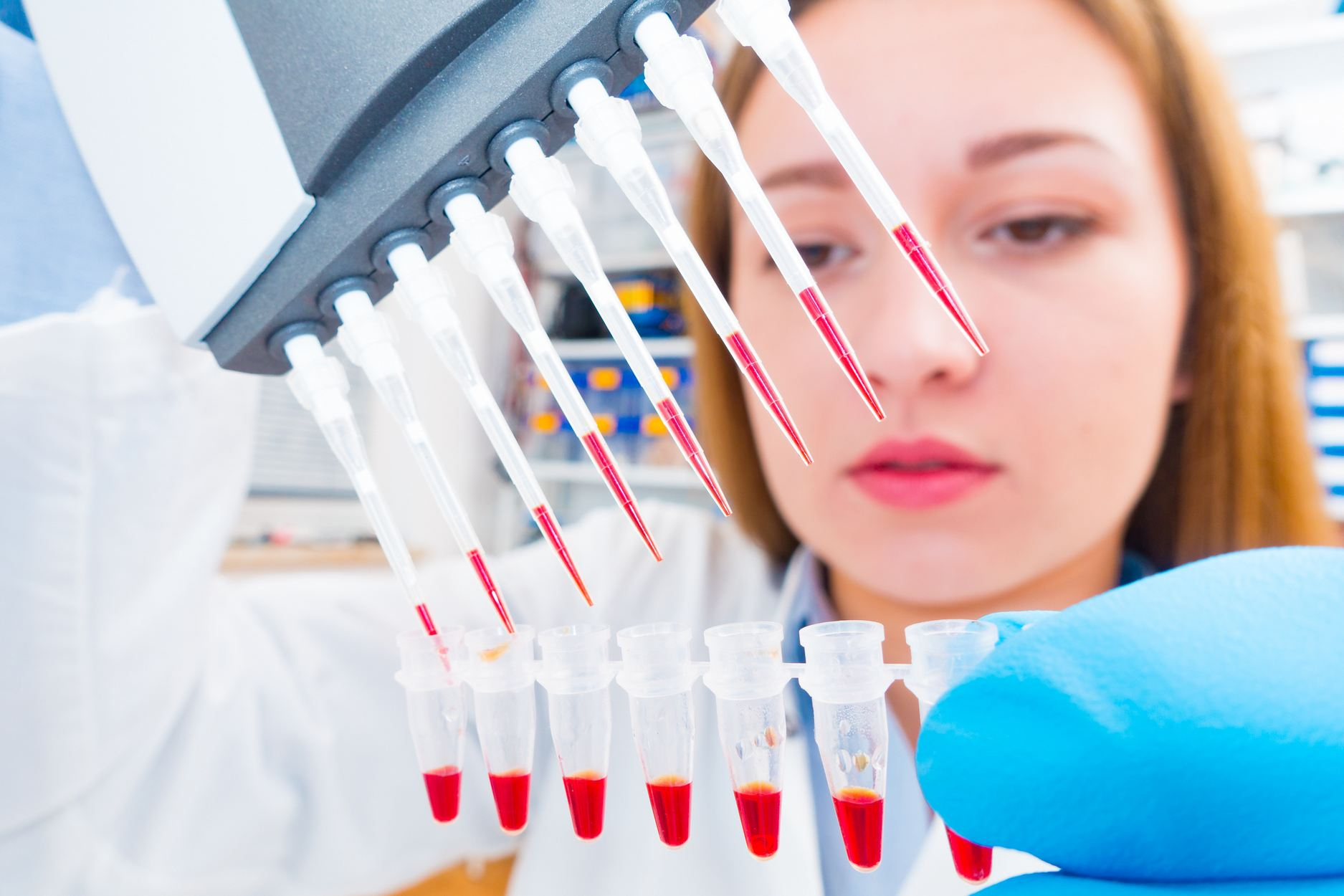With a global medical device market size of almost $680 billion, it's not surprising that many investors are interested in medical device stocks. And with that market expected to grow to more than $1.1 trillion by 2034, investor interest will almost certainly intensify.
In this article, we'll address exactly what medical device stocks are and identify some of the best stocks to buy. We'll also identify some of the top medical device exchange-traded funds (ETFs).

What are medical device stocks?
Medical device stocks are shares of companies that make and sell medical devices. Medical devices include any appliance, instrument, or machine used to diagnose, treat, or prevent a disease or condition. Software, implants, and chemical reagents used for those purposes are also considered medical devices.
If you think that's a broadly defined category, you're right. The World Health Organization estimates that there are roughly 2 million different kinds of medical devices marketed today.
The best medical device stocks in 2025
There are many great medical device stocks for investors to consider. Five of the best picks right now are Abbott Laboratories (ABT +0.22%), GE Healthcare (GEHC +0.22%), Intuitive Surgical (ISRG -0.03%), Johnson & Johnson (JNJ +0.97%), and Transmedics Group (TMDX -0.94%).
| Name and ticker | Market cap | Dividend yield | Industry |
|---|---|---|---|
| Abbott Laboratories (NYSE:ABT) | $217.0 billion | 1.89% | Healthcare Equipment and Supplies |
| GE HealthCare Technologies (NASDAQ:GEHC) | $38.0 billion | 0.17% | Healthcare Equipment and Supplies |
| Intuitive Surgical (NASDAQ:ISRG) | $204.6 billion | 0.00% | Healthcare Equipment and Supplies |
| Johnson & Johnson (NYSE:JNJ) | $500.6 billion | 2.47% | Pharmaceuticals |
| TransMedics Group (NASDAQ:TMDX) | $4.3 billion | 0.00% | Healthcare Equipment and Supplies |
1. Abbott Laboratories
Abbott Laboratories is a large-cap company that makes medical devices, including continuous glucose monitoring (CGM) systems, defibrillators, heart failure monitoring systems, mechanical heart valves, pacemakers, and spinal cord stimulators. It also operates multibillion-dollar business segments that market established pharmaceuticals, diagnostics systems, and nutritional products.

NYSE: ABT
Key Data Points
The COVID-19 pandemic provided a huge boost to Abbott's fortunes, thanks to the company's rapid diagnostic tests. Although the company's overall revenue declined as demand for the tests waned, Abbott's base business remains strong. In particular, Abbott's FreeStyle Libre stands out as a key growth driver. It's the top-selling CGM device in the world, with soaring sales.
Income investors may find Abbott especially attractive. It's a Dividend King with 53 consecutive years of dividend increases.
2. GE Healthcare Technologies
GE Healthcare Technologies was spun off from General Electric in 2023. However, the large-cap company has been a leader in the medical device market for decades.

NASDAQ: GEHC
Key Data Points
The company has four business segments: imaging, advanced visualization solutions, patient care solutions, and pharmaceutical diagnostics. Medical imaging ranks by far as its biggest moneymaker, generating more than 40% of total revenue.
Like many medical device stocks, GE Healthcare should benefit from aging populations across the world. This tailwind could drive higher demand for the company's products as older individuals require more healthcare services.
GE Healthcare appears to be in a strong position to capitalize on this opportunity. It has a great track record of innovation and invests heavily in research and development -- more than $1 billion each year.
3. Intuitive Surgical
Intuitive Surgical is a large-cap company that pioneered the development of minimally invasive robotic surgical systems. The company launched its flagship da Vinci surgical system in 1999. Da Vinci was first approved for use in general laparoscopic surgery, but today it is used in a wide range of procedures.

NASDAQ: ISRG
Key Data Points
More than 17.6 million procedures have been performed using da Vinci systems, with almost 2.7 million of those procedures done in 2024. More than 11,000 da Vinci systems are installed in hospitals across the world.
Aside from a temporary slowdown during the COVID-19 pandemic, Intuitive Surgical's procedure volumes have grown steadily in recent years, boosting the company's recurring revenue from selling replacement instruments. In 2024, recurring revenue made up 84% of Intuitive's total revenue.
Aging trends should help Intuitive Surgical by driving increased demand for surgical procedures. The company also continues to enhance its robotic surgical systems so that they can be used for additional types of procedures.
4. Johnson & Johnson
Johnson & Johnson is a large-cap company that ranks as one of the world's biggest medical device makers. It markets medical devices that include catheters, implants, robotic surgical systems, surgical instruments, and wound closure products. J&J is also a top maker of prescription drugs.

NYSE: JNJ
Key Data Points
Acquisitions have played a big role in helping Johnson & Johnson grow its medical device business. In recent years, the healthcare giant has acquired several medtech companies, including Abiomed and Verb Surgical.
Johnson & Johnson spun off its consumer health unit into a separate publicly traded entity, Kenvue (KVUE +1.12%), in May 2023. The move should enable the company to deliver even stronger growth.
The stock remains a favorite for income investors, too. J&J has increased its dividend for an impressive 63 consecutive years, making it one of the top Dividend Kings in the market.
5. TransMedics Group
TransMedics Group is a relatively small company that markets devices that support the transportation of donor organs. Its Organ Care System (OCS) essentially keeps lungs, hearts, and livers functioning during transportation.

NASDAQ: TMDX
Key Data Points
Its OCS presents a huge leap forward from the cold storage that's the current standard for transporting donor organs. The technology significantly increases the number of organs that, ultimately, are able to be used in transplants. It can also help greatly reduce post-transplantation complications.
This big unmet medical need provides a great opportunity for TransMedics. The company's national aviation fleet, the first dedicated exclusively to transporting donor organs, puts it in a strong position to take advantage of this opportunity.
TransMedics continues to deliver strong revenue growth. The company is also now profitable, with rapidly increasing earnings.
Medical device ETFs
For investors who want to buy a basket of medical device stocks, there are several medical device ETFs to consider, including iShares U.S. Medical Devices ETF (IHI +0.14%), SPDR S&P Health Care Equipment ETF (XHE +0.22%), and First Trust Indxx Medical Devices ETF (MDEV +0.14%).
1. iShares U.S. Medical Devices ETF
The iShares U.S. Medical Devices ETF is operated by BlackRock (BLK +0.22%). This ETF invests only in U.S. medical device companies. The fund's annual expense ratio is 0.38%.
iShares U.S. Medical Devices ETF owned positions in 49 stocks in late 2025. Its top holdings included Abbott Laboratories, Intuitive Surgical, Boston Scientific (BSX +0.04%), Medtronic (MDT -0.20%), and ResMed (RMD -0.07%).
2. SPDR S&P Health Care Equipment ETF
The SPDR S&P Health Care Equipment ETF is operated by State Street (STT +1.16%). It invests in healthcare equipment and healthcare supplies companies, a group that includes many medical device companies. The ETF's annual expense ratio is 0.35%.
SPDR S&P Health Care Equipment ETF owned positions in 64 stocks in late 2025. Its top holdings included Tandem Diabetes Care (TNDM -0.62%), NovoCure (NVCR +1.28%), TransMedics Group, Medtronic, and Masimo (MASI -0.27%).
3. First Trust Indxx Medical Devices ETF
The First Trust Indxx Medical Devices ETF is operated by First Trust Portfolios. This ETF invests in medical device companies based in both the U.S. and other countries. Its annual expense ratio is 0.70%.
The First Trust Indxx Medical Devices ETF owns positions in 50 stocks as of late 2025. Its top holdings included Wuxi AppTech (WUXI.F -7.92%), Hoya (OTC:HOCP.Y), Smith & Nephew (SNN +0.15%), Agilent Technologies (A -0.03%), and Exact Sciences (EXAS -0.05%).
Should you invest in medical device companies?
As is the case with most investing questions, the best answer about whether you should invest in medical device companies is that it depends. Every investor has different goals, risk tolerances, and time horizons.
One key risk associated with medical device stocks is a decline during economic downturns as healthcare providers reduce their spending. They also face volatility related to government and private payer reimbursement decisions.
Medical device companies can experience significant setbacks when products in development have problems during clinical trials or fail to win regulatory approvals. Even products that successfully reach the market can face intense competition. It's also possible that the products might cause harm to patients, potentially resulting in litigation that affects the companies' business.
Especially investors with short time horizons and/or low risk-tolerance levels should consider these factors. However, the long-term prospects for the medical device industry generally appear to be very good. Aging demographics and technological innovations should provide nice tailwinds for the medical device sector.
Medical device stocks are often recession-resistant when their products are must-haves for patient care. And while competition can sometimes be intense, regulatory hurdles and high research and development investment costs can create barriers to entry for new competitors. For long-term investors who don't mind the potential for volatility, medical device stocks should provide an attractive opportunity.
Factors to consider when choosing medical device stocks
What should you think about when trying to decide which medical stocks to buy? Here are some key factors to consider:
- Financial strength
- Revenue and earnings growth
- Market share
- Competitive advantages
- Development pipeline
- Valuation
Related investing topics
How to invest in medical device stocks
Steps to take to invest in medical device stocks include:
- Open your brokerage app: Log in to your brokerage account where you handle your investments.
- Search for the stock: Enter the ticker or company name into the search bar to bring up the stock's trading page.
- Decide how many shares to buy: Consider your investment goals and how much of your portfolio you want to allocate to this stock.
- Select order type: Choose between a market order to buy at the current price or a limit order to specify the maximum price you're willing to pay.
- Submit your order: Confirm the details and submit your buy order.
- Review your purchase: Check your portfolio to ensure your order was filled as expected and adjust your investment strategy accordingly.























